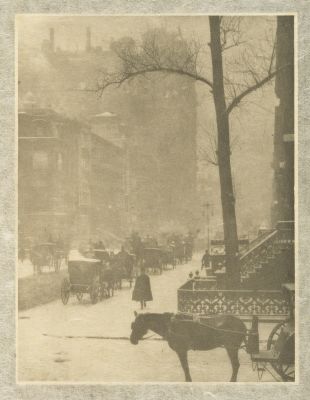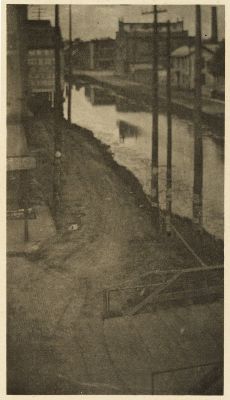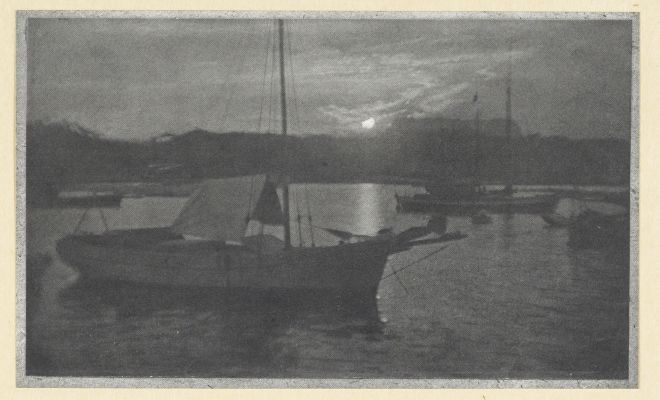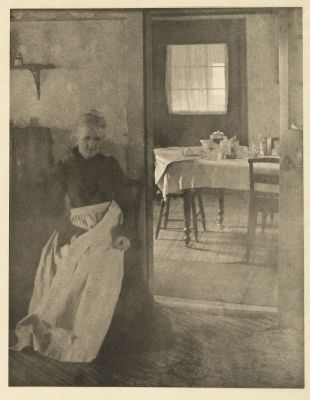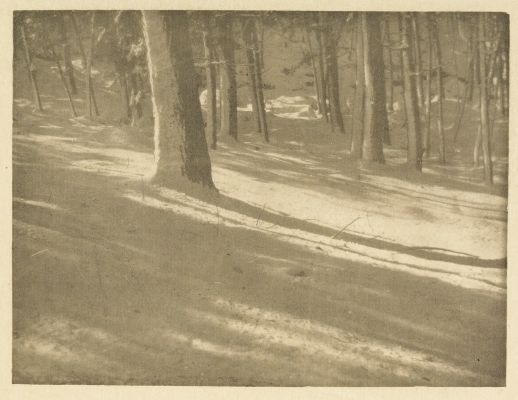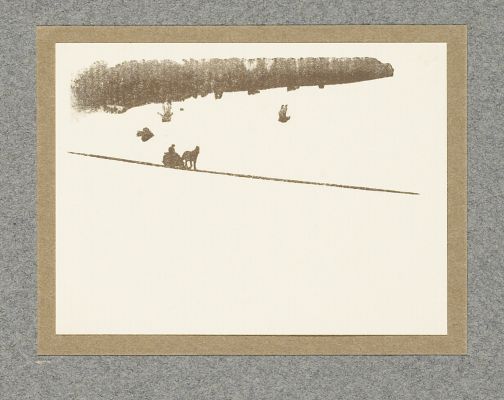
Title
Ring TossArtist
White, Clarence H. (American, 1871-1925)Publication
Camera Work IIIDate
1903Process
Halftone (two color)Atelier
Photochrome Engraving Company, New YorkImage Size
17.6 x 13.8 cm
In Camera Work, when Stieglitz felt there was a better process than photogravure to translate a photograph into ink, multiple other photomechanical processes were harnessed. In this case Stieglitz used the halftone process to convey the light orange gum bichromate of the original print resembling pastel or red chalk.
Ring Toss is an ingratiating vision of youthful feminine grace in a domestic setting. It signals a remove from the modern urban world and demonstrates White’s ability to find sentiment even in the commonplace. White’s famous picture eked out in a popular pastel shade called terracotta, imitating not only the color and texture of pastels, but the very spatial arrangements and formal informality of Degas’s ballet-dancer pastels. Those were themselves imitations of the off-center snapshot configurations, mixed with a great deal of Japanese woodcut stylizations. Photography was imitating painting which was imitating photography. [1]
Reproduced / Exhibited
Beaton, Cecil, and Gail Buckland. The Magic Image: The Genius of Photography. London: Pavilion, 1989.p. 103
References
[1] Jussim, Estelle. Visual Communication and the Graphic Arts: Photographic Technologies in the Nineteenth Century. New York: Bowker, 1983.
White, Clarence H, Elizabeth A. McCauley, and Peter C. Bunnell. Clarence H. White and His World: The Art Et Craft of Photography, 1895-1925. , 2017. P. 61
